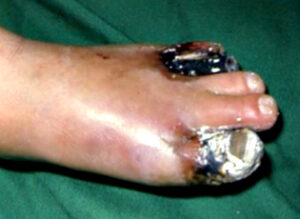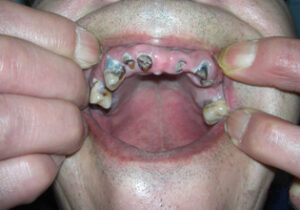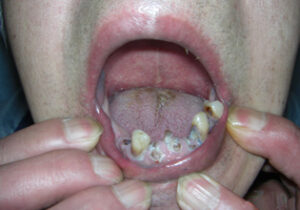Characteristics of Buerger's disease
 Buerger's disease is an obstruction of the peripheral arteries of the extremities that occurs in smokers under the age of 50. It has been feared as idiopathic anthrax because it often develops suddenly, causes severe pain, and finally leads to amputation. The deciding factor for diagnosis is that it is common among young people, diabetes, dyslipidemia (hyperlipidemia), and no hypertension.
Buerger's disease is an obstruction of the peripheral arteries of the extremities that occurs in smokers under the age of 50. It has been feared as idiopathic anthrax because it often develops suddenly, causes severe pain, and finally leads to amputation. The deciding factor for diagnosis is that it is common among young people, diabetes, dyslipidemia (hyperlipidemia), and no hypertension.
Various theories have emerged as causes from the beginning of the 20th century, but most have been denied.
Buerger's disease and periodontal disease
 Meanwhile, the cause of periodontal disease, which we discovered in 2005 through joint research with the professors of the Department of Periodontology, Faculty of Dentistry, was widely reported.
Meanwhile, the cause of periodontal disease, which we discovered in 2005 through joint research with the professors of the Department of Periodontology, Faculty of Dentistry, was widely reported.
It was found that many patients with Buerger's disease have extremely bad teeth and many have no teeth, and that they are moderately to highly affected by periodontal disease, and periodontal disease bacteria enter the blood through lymphatic vessels in the mouth. I also found that it was found all over the body.
The definitive support for the etiology was the use of an electron microscope to prove that periodontal disease bacteria enter or are surrounded by platelets and live in the blood. Not only is it taken up, it also creates large platelet aggregates.
If it works as an embolus, it can explain various findings and symptoms of Buerger's disease, the disease that stops smoking, and it can cause inflammation, blood clots, and valvular insufficiency in veins frequently. If so, you can understand.
Proof that the etiology is periodontal disease bacteria
 In order to prove that a microorganism is the cause of a particular disease, the following three conditions must be met. (Three principles of Koch Renhe)
In order to prove that a microorganism is the cause of a particular disease, the following three conditions must be met. (Three principles of Koch Renhe)
- Finding certain microorganisms in certain diseases
- Being able to isolate the microorganism
- Infecting susceptible animals with isolated microorganisms to cause the same disease
In the research so far, 1 and 2 have been cleared. In 2014, we worked on the demonstration of Principle 3 using rats. About two weeks after injecting periodontal disease bacteria into both venous arteries, findings of the same structure as seen in humans were obtained, and it can be said that the proof was finally made.
"No smoking" is the first step in treatment
We conclude that Buerger's disease is caused by a young person who smokes and exacerbates periodontal disease, causing peripheral arterial occlusion due to a platelet clot containing periodontal disease bacteria.
Therefore, Buerger's disease can be recovered enough to ski by quitting smoking, curing periodontal disease, and performing exercise therapy and sometimes sympathectomy.
When bad breath is strong and the condition is changing acutely, antibiotics (such as azithromycin) that suppress periodontal disease bacteria for a long period of time may be effective.
The future of Buerger's disease treatment
And it has been proved one after another that Buerger's disease also causes lesions in small blood vessels throughout the body. Many young people in Asia and Africa are still crying for the tragedy of amputation due to the disease.
Please pay more attention to the treatment of Buerger's disease, which has finally become clear in the 21st century, coupled with the progress of smoking cessation technology.
